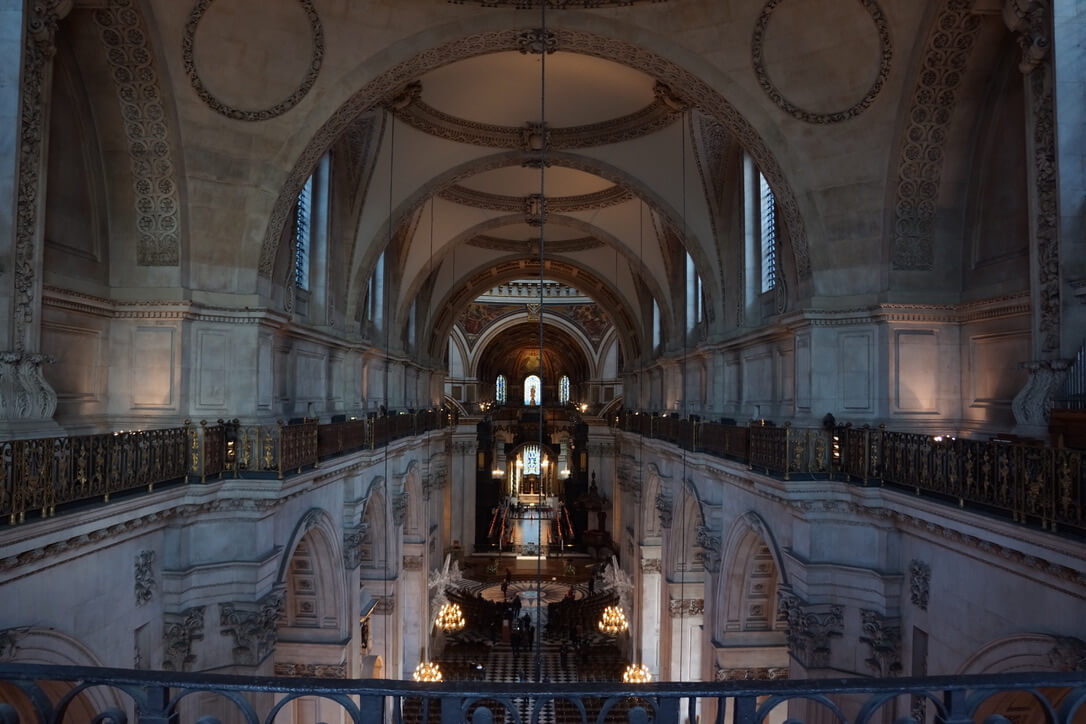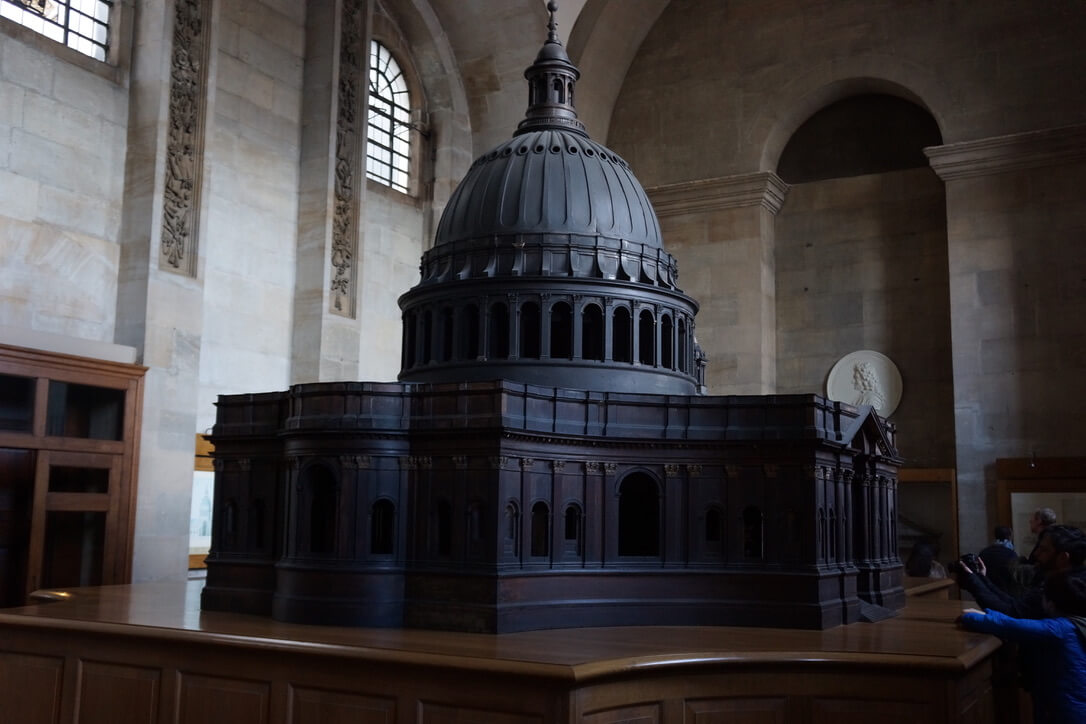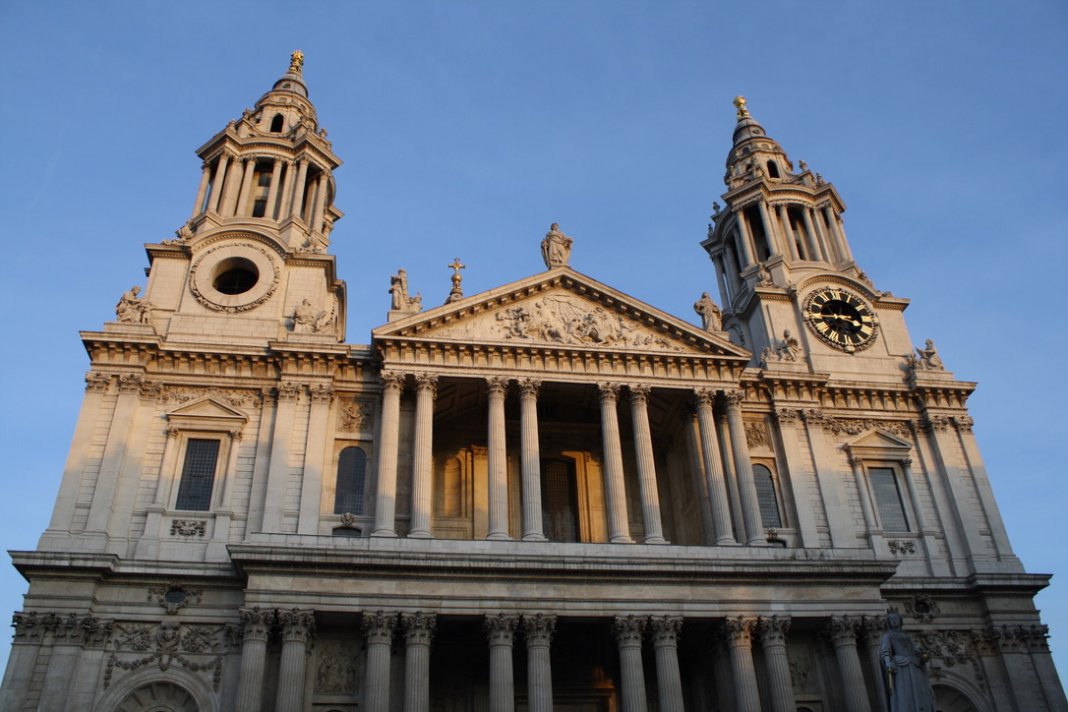When Sir Christopher Wren climbed down from the scaffolding of his newly completed St. Paul’s Cathedral in 1710, he had achieved something remarkable – not just an architectural masterpiece, but a powerful symbol of London’s resurrection after the Great Fire of 1666. The story of St. Paul’s construction is one of determination, innovation, and no small amount of drama.
The Great Fire had left the old medieval St. Paul’s a smoking ruin. While some argued for patching up the remains, the 34-year-old Wren saw an opportunity to create something entirely new. His vision was radical – a massive dome inspired by St. Peter’s in Rome, but with distinctly English character. The clergy weren’t entirely convinced, preferring a more traditional gothic design, but Wren cleverly obtained royal approval for his plans.
What followed was one of the most ambitious construction projects London had ever seen. Work began in 1675 with the clearing of the old cathedral’s remains – no small task given that some of the walls were five feet thick. Wren insisted on using the finest Portland stone, which arrived by boat from Dorset. The construction site must have been a spectacular sight, with hundreds of workers hauling massive stones using an innovative system of horse-powered cranes.
Wren faced numerous challenges during the 35-year build. The ground was unstable, requiring ingenious foundation solutions. Money was constantly tight – at one point, part of the workers’ wages was paid through a tax on coal coming into London (leading to the joke that St. Paul’s was built with smoke). There were also regular clashes with the cathedral authorities over his designs, though Wren usually managed to get his way through clever diplomacy or sometimes just by quietly ignoring their demands.

The most dramatic moment came during the construction of the famous dome. Wren actually built three domes – an outer one for show, an inner one for looks, and a hidden middle one to support the weight of the lantern on top. This triple-dome solution was revolutionary for its time. The final piece of the puzzle was set in place by Wren’s son, Christopher Jr., in 1708.
Throughout the construction, Wren remained hands-on, often being hoisted up in a basket to inspect the work personally – quite remarkable given that he was in his seventies by the time the cathedral was completed. Legend has it that he would take his midday meal in a small wooden structure suspended under the dome, where he could oversee the work and enjoy London’s best view.
The cathedral quickly became London’s pride and joy. It survived the Blitz (though narrowly – a time-delayed bomb that could have destroyed the dome was famously defused by a bomb disposal squad). The famous photograph of St. Paul’s dome standing proud above the smoke of German bombing became a powerful symbol of British resilience.
Today’s visitors can still see many of Wren’s clever touches. The geometric staircase (the Dean’s Staircase) seems to hang without support. The Whispering Gallery demonstrates his understanding of acoustics – a whisper against the wall can be heard clearly on the opposite side of the dome. Even the orientation of the cathedral was carefully planned to maximize its dramatic impact when viewed from Ludgate Hill.

Some fascinating details about the construction survive. Wren had the masons carve their individual marks into stones they worked on – you can still spot these if you look carefully. He also included deliberate imperfections in the west front because he believed only God could create perfection. And contrary to popular belief, he wasn’t the first architect to work on the new cathedral – the initial plans were drawn up by others, though Wren soon took over.
St. Paul’s wasn’t just Wren’s masterpiece – it was the culmination of a remarkable period in London’s history, when the city transformed itself from medieval maze to modern metropolis. The cathedral took 35 years to build, and at a cost of £1.2 million (over £200 million in today’s money), it was worth every penny. Wren died in 1723 at the age of 90, and was fittingly buried in his creation. His simple tomb bears the Latin inscription which translates as: “Reader, if you seek his monument, look around you.”
Four centuries later, St. Paul’s remains exactly what Wren intended – not just a place of worship, but a symbol of London’s endurance and renewal. Its dome still dominates the City’s skyline, a testament to one man’s vision and the determination of generations of Londoners to create something truly extraordinary.
A Little Bit of London In Your Inbox Weekly. Sign-up for our free weekly London newsletter. Sent every Friday with the latest news from London!




